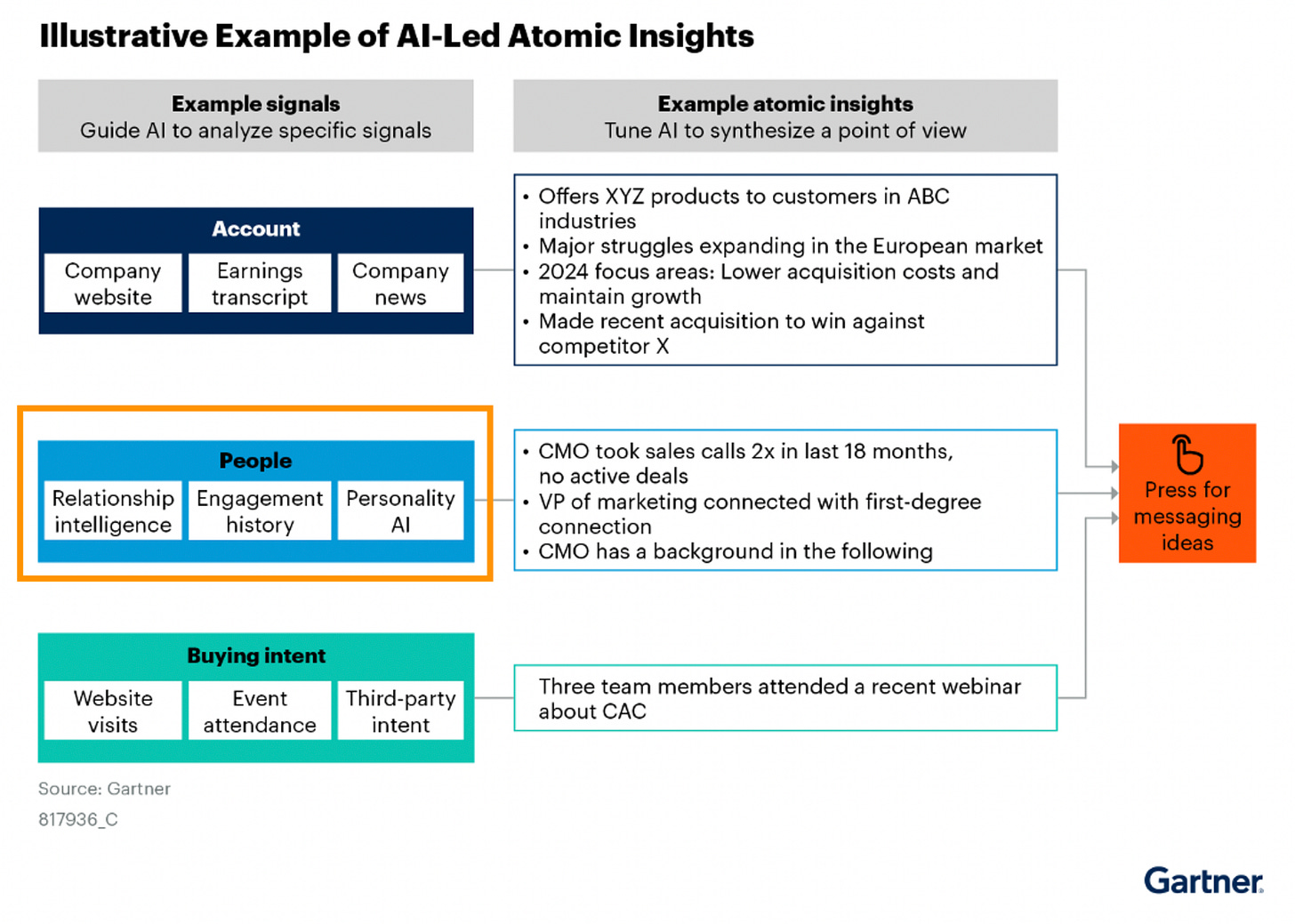Perfect Sales Intelligence (Edition 17)
Most people have a partial view of Sales Intelligence. It leaves them running somewhat blind. In this post, we discuss what makes Sales intelligence wholesome. And perfect.
AI has put '‘intelligence’ on the map. Not only that, it has put it bang in the middle!
Except those who are consolidating (some SaaS startups for example), most sales teams I meet are stepping up on the gas when it comes to adding intelligence (aka insights) to their sales motions.
However, most of them have a somewhat limited view of what should be a part of their Sales Intelligence stack. Often, their POV is an outcome of what they have known and seen so far. Like a Rugby player from Australia who comes to play (American) Football, and doesn’t even know that he can pass the ball forward by hand!
So most people end up doing what they know. Which in other words is the ‘usual’.
But ‘usual’ does not move the needle. And sales is all about moving the needle.
In one of my earlier posts, I had written about the anatomy of a pursuit. I had listed 4 actors/units that are at play in a typical pursuit.
Seller
Buyer
Account
Deal
Having a real insight into these 4 actors/units at every step is also what the goal of a ‘complete’ Sales Intelligence stack should be.
What role does each play in that? Allow me to elaborate.
Seller focused intelligence is all about knowing what your seller is doing. Is he following MEDDPICC (if he should)? Has she dived deep enough into the pain? Have they reached out to all relevant buying committee members?
All of these questions fall under sSeller Intelligence. Traditionally, this has been the domain of tools like Gong, Chorus and more. This is piece 1 of the ‘perfect’ Sales Intelligence stack.
Buyer focused intelligence is all about understanding the buyers deeply and connecting with them meaningfully. What matters to the buyers? How do they evaluate deals? Who on our side might have some away with them? What is a potential deal-breaker? How could you build trust?
All of these questions fall under Buyer focused intelligence. Traditionally, this segment has not existed. But over the last couple of years, it has become a part of the mainstream. Gartner has now added it to its recommended approach as well, they call it ‘People Intelligence’.
This is piece 2 of the ‘perfect’ Sales Intelligence stack. It is a piece that most people have not been not looking for, because they ‘do not know what they do not know’. However, it has been gaining traction fast, especially on the enterprise side where people and trust play a crucial role.
At Humantic AI, we are pioneers of this space - we literally coined the term!
(Bonus read: What is Buyer Intelligence?)
The third piece of the puzzle is Account Intelligence. This is intelligence about the account - the company - that you are selling to. Does company X have a pain that you can solve? What other options are they considering? Do they already work with one of your competitors? Who all will be involved with the decision? (yes, that too!)
All of these questions are about the organization, and hence belong under Account Intelligence. Traditionally, this intelligence has been available piecemeal. However, LLMs have now made it easier to gather such intelligence from a variety of sources. Agents from Salesforce or Zoominfo, products like Databook are some good options to consider here. This is piece 3 of the perfect Sales Intelligence puzzle.
And finally, we come to Deal Intelligence. Everything that is about answering the question “what is the current status of this deal?” falls under Deal Intelligence.
Once again, agents from Salesforce or Zoominfo make for options worth considering here. Conversation intelligence tools like Gong also provide some level of intelligence about a deal. However, the biggest constraint here is that most of the available options have visibility only into certain aspects of the deal. Hence they tend to provide partial intelligence.
By now, it must be apparent that there is some overlap between these 4 domains when it comes to obtaining wholesome Sales Intelligence. However, the overlap is often minor, and sometimes even useful.
The biggest point to keep in mind when building Sales Intelligence stack is that unlike data or workflows, intelligence is not a ‘this OR that’ choice. When adopting workflow tools, it’s simply illogical to have multiple tools. (It makes no sense to have two different CRMs for example). Even when it comes to Data tools, you might not always need to have Apollo if you have ZoomInfo to provide you email IDs or phone numbers.
However, when it comes to intelligence, one needs to see it through a different lens. Just as reading one book does not remove the learnings from the previous book from your mind, you don’t have to skip one kind of intelligence just because yo have adopted another kind of intelligence. Intelligence is inherently accumulative in nature, and having more of it is almost always better than having less of it. As long as it its overhead doesn’t exceed its value that is.





